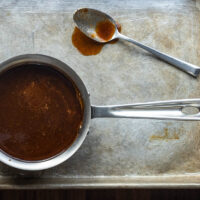Homemade Lamb Demi-Glace (Using a Head)
Homemade lamb demi-glace is a heavily reduced meat stock, is abuilding block of classic French cuisine, requiring many hours of simmering. While it’s difficult to recreate the glace a restaurant would make, you can make an approximation at home with a lamb head and a crock pot that comes pretty close.

Pork, beef, chicken, goat, lamb and venison bones can all be used to make glace, and are interchangeable for cooking purposes.
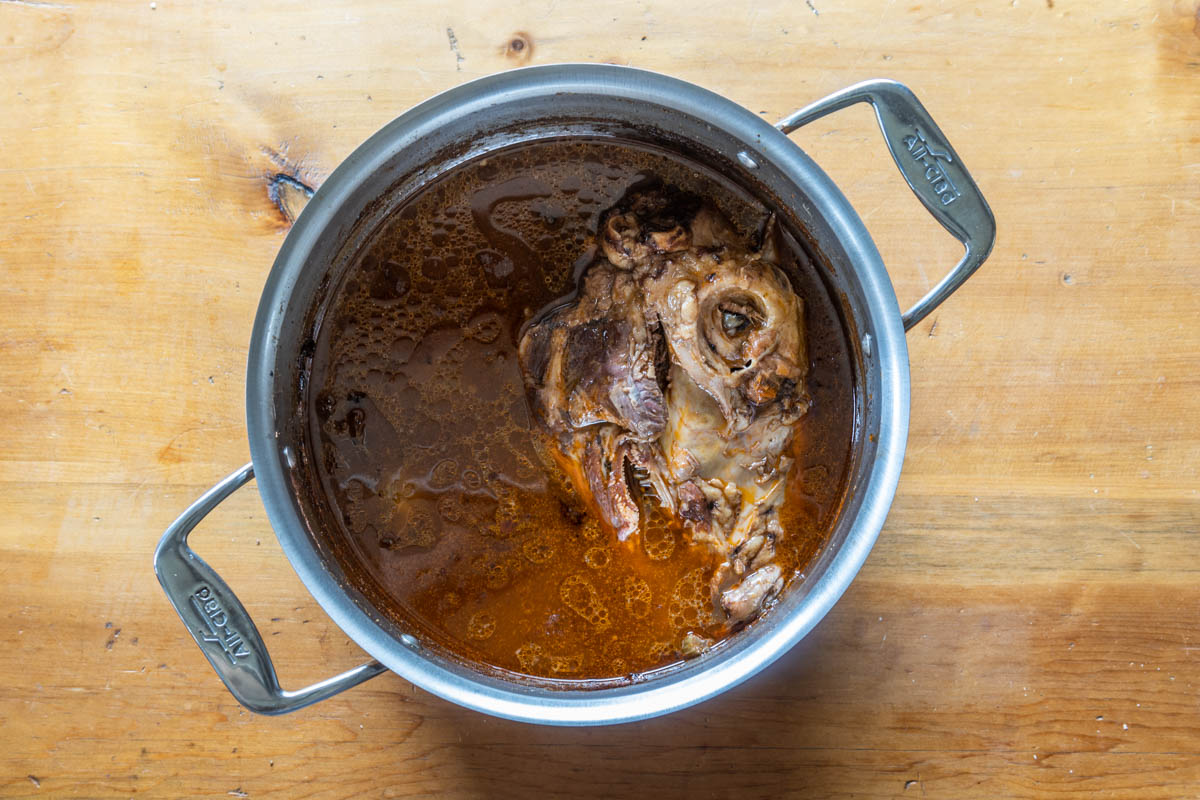
Traditionalists might say you need veal knuckle or other specific bones, but I can tell you after years of making glace the most important thing is just good bones, and a long cooking time.
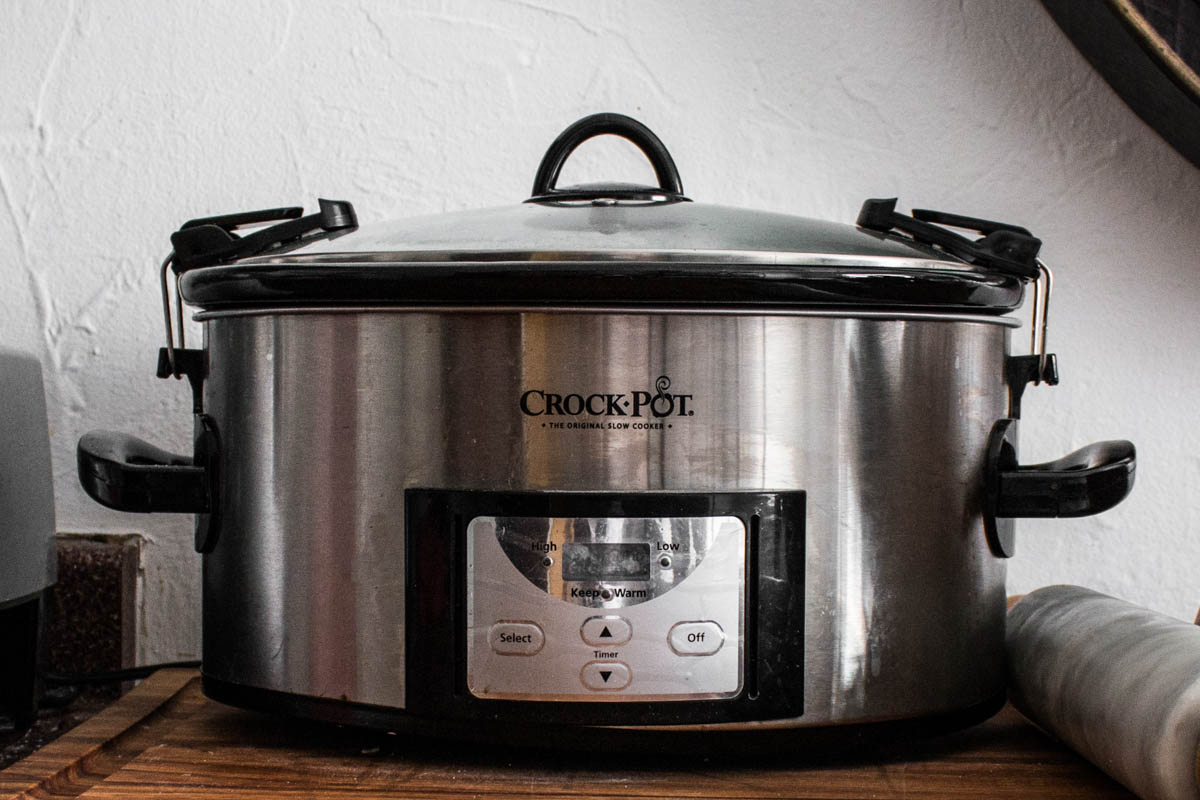
How to make lamb demi glace
Technically, demi-glace is stock reduced to half of its volume. For the richest product, you want true glace, which is a further reduction arriving at around 20-30% of the starting volume of stock, or less depending on the bones you start with and the collagen they contain. The home recipe here is only reduced to 30%, but I hardly ever measure it. The most important part is that the reduction has achieved a rich, dark color and silky body. See below for how far I reduced the lamb glace I made at home.
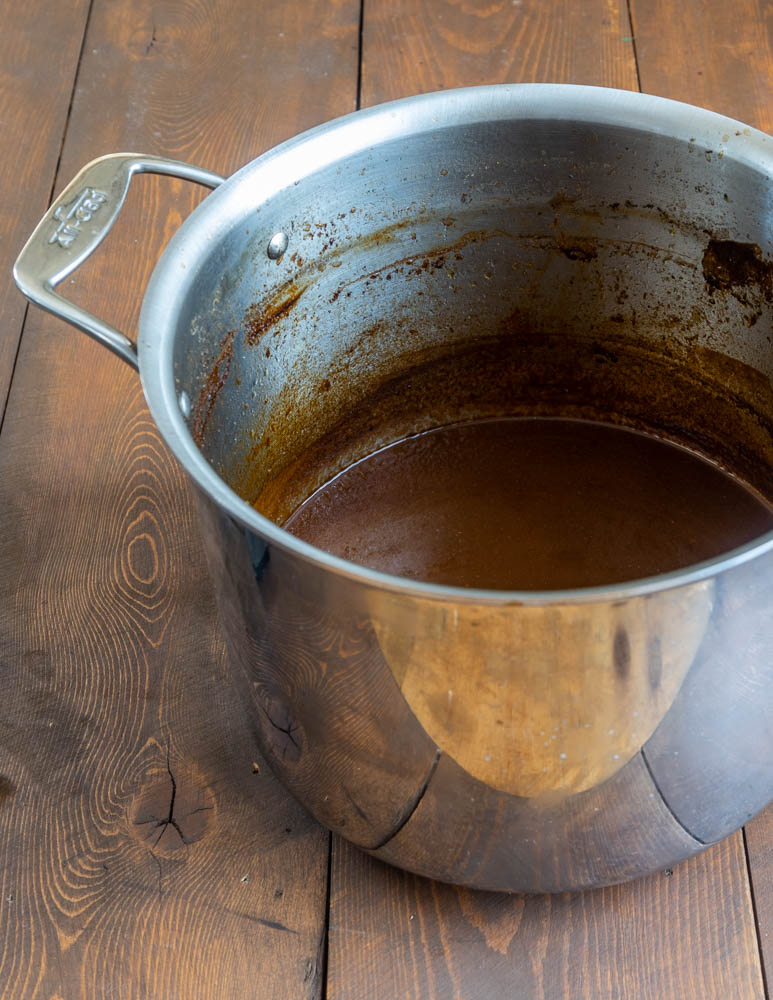
Tips
- The easiest way to make this is in a crock pot, but for larger batches, I use a stock pot.
- A crock pot will gradually evaporate liquid, so there usually isn’t a need for reducing the glace further after 48 hours of cooking, but the exact amount of liquid left after cooking can vary.
- Glace is precious and will eventually go bad in the fridge, so I like to freeze it. For easy portioning, I pour the finished sauce into ice cube trays and freeze in a re-sealable vacuum bag.
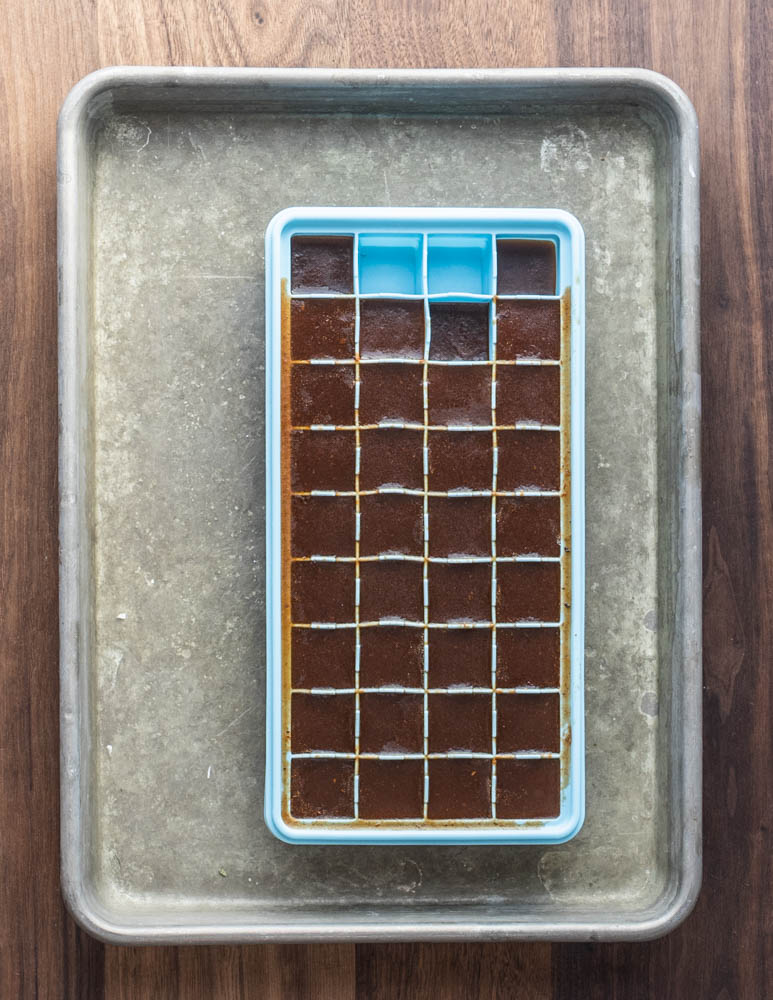
How to use Demi Glace
Think of glace as a meat essence you can add to sauces. Traditionally a spoonful is added to things like peppercorn sauce. Adding pureed, roasted, peeled, seeded tomatoes is a favorite of mine, and ends up tasting a bit like meaty tomato gravy. It can also be added to soups for a little color and extra flavor like you would a bouillon cube.
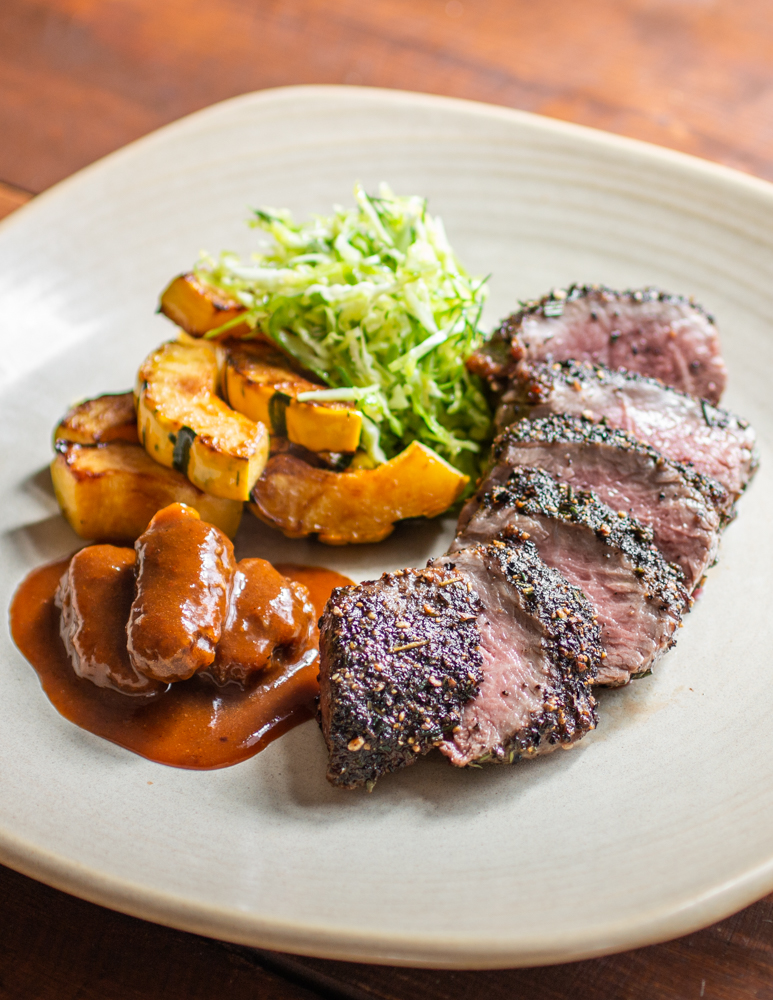
Using glace to make sauces
In professional kitchens, demi-glace is used as a building block to make lots of different sauces. Here’s some of my favorites.
Fruit glace
Adding fresh or dried fruit like blueberries with red wine vinegar and a touch of sugar, reducing down and whisking in a little butter to finish is a great, sweet-sour sauce for roasted and grilled meats.
Mushroom glace
Sweat some mushrooms in oil with a little shallot until they mushrooms have evaporated their liquid. Add a splash of red wine and reduce it by half. Add some glace-just enough to keep everything juicy, and whisk in a little unsalted butter, swirling and stirring the pan to thicken it. At restaurants, I would often make this with mushroom duxelles.
Mustard glace
Add some whole-grain mustard and a splash of heavy cream to your glace, whisking in a nob or two of unsalted butter and simmering to thicken the sauce.

This recipe is by Chef Alan Bergo, the Forager Chef. A chef from Minnesota and author of The Forager Chef’s Book of Flora. Learn more about Chef Alan and his hunt for mushrooms, wild and obscure foods at foragerchef.com.
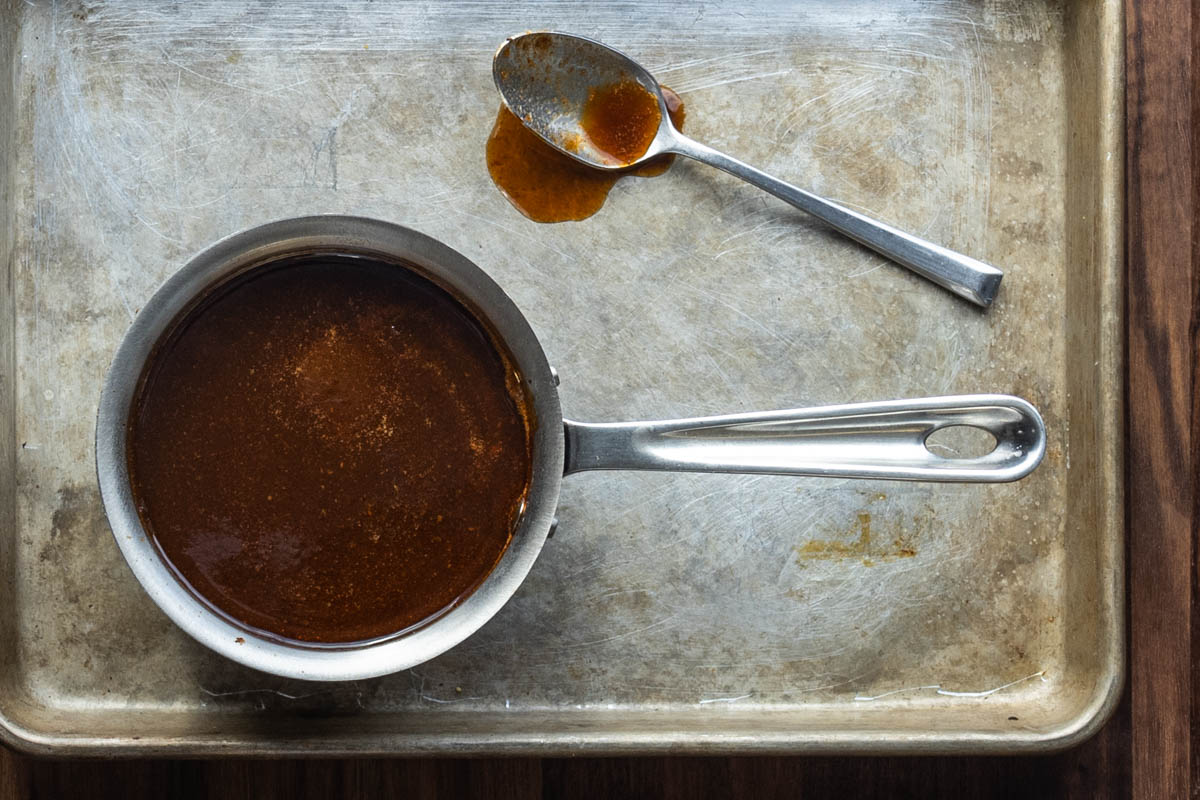
Related Posts
Homemade Lamb Demi-Glace (Using a Head)
Equipment
- 1 Large stock pot of slow cooker
- 1 Fine strainer
Ingredients
- 3.5 lbs bones or a lamb head and a few handfuls of trim or meaty bones
- 2 tablespoons tomato paste
- 1 cup red wine
- 1 small onion roughly chopped
- 1 medium carrot roughly chopped
- 1 rib celery roughly chopped
- A few sprigs of fresh thyme 10 peppercorns, and 1 dried bay leaf, wrapped in cheesecloth and tied for easy removal.
- Water as needed, about 5 cups
Instructions
- Roast the head at 350 F for 45 minutes or until browned, then put into an 8 qt slow cooker with the remaining ingredients. Cook on low for 48 hours, then strain.
- Chill the glace, skimming any fat that rises to the surface and discarding. Inspect the glace and it's set-it should be very firm like jello. If it isn't firmly set, you can reduce it in a small pan to concentrate it, just keep an eye on it.
- After the glace is done, it can be refrigerated for up to a week. I like to freeze it in ice cub trays, vacuum-sealed and kept in the freezer to use as needed.


